Site will be
unavailable for maintenance from June. 4, 11:30 p.m., to June 5, 12:30 a.m. ET. Thank you for your
patience!
Triple storm: Hurricane recovery in Guatemala
Posted on 08/19/2021
Photos by Jake Lyell
In November 2020, Reina, 26, was convinced things couldn’t get much worse. Her community in Guatemala had been stuck in lockdown since the start of the COVID-19 pandemic earlier that year. “We had no income, and we had no money to buy food,” says the mother of two. Then the first hurricane hit.
Eta came on the tail end of hurricane season, just when most families were beginning to believe they were safe from any major storms. It produced torrential rainfall, high winds, flooding and a catastrophic storm surge that claimed lives throughout Guatemala, Honduras and Nicaragua. But it was Iota, a category 4 hurricane that followed Eta not even two weeks later, that pushed families like Reina’s from the teetering edge of survival to the lowest point of despair. The repeat winds, flooding and mudslides damaged Reina’s home and robbed her children of any sense of security they had left.
This triple storm – hurricanes Eta and Iota, on top of the COVID-19 pandemic – represented one of the worst natural disasters the Central American region has seen in decades. Hundreds of people were killed, hundreds of thousands were displaced from their homes, and millions in economic losses were sustained in addition to the swathes of people already experiencing unprecedented poverty and food insecurity.
But this story isn’t about the destruction of these communities. It’s about their recovery, and the incredible resilience of children and families in times of hardship.
“ChildFund delivered food to us and helped us through that time,” Reina says.
Short-term hurricane relief in Guatemala
In the aftermath of the storm, many local grocery stores were destroyed or shut down, leaving even families with the means to buy food without many options. Delivering food baskets to homes was a critical part of our emergency response for the families worst hit. We also delivered hygiene and sanitation essentials: soap, laundry detergent, bleach, feminine products.

Reina makes tortillas for breakfast at her home in Guatemala. After the hurricanes hit near ChildFund’s program areas in Guatemala and Honduras, we assisted more than 38,000 families with food baskets, psychosocial support and other aid. The baskets included staples like rice, corn flour, beans, salt and sugar.

Time to eat! Reina’s son Gustavia, 9, enjoys his meal.
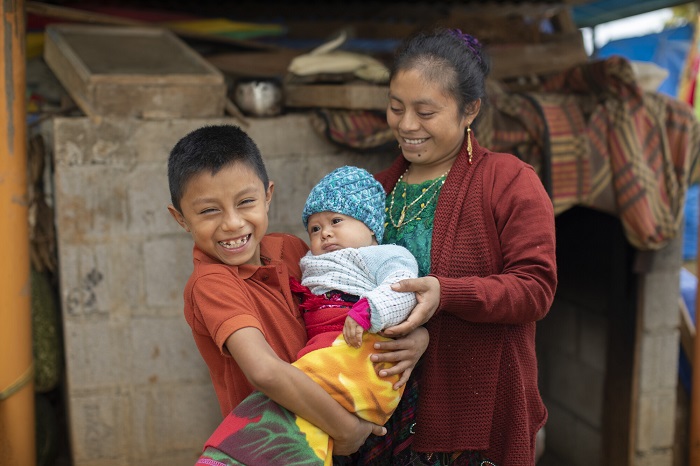
Reina with Gustavia and her other child, Maria Esperanza, 6 months.

Portrait of a family in Huehuetenango Department, Guatemala, who were impacted by both hurricanes and the pandemic. “If we hadn’t received help from ChildFund, the children would have starved,” says Eva, mom of three.
For families whose homes were extensively damaged, ChildFund also delivered shelter kits with basic household items like mattresses, blankets, mosquito nets, water containers and filters.
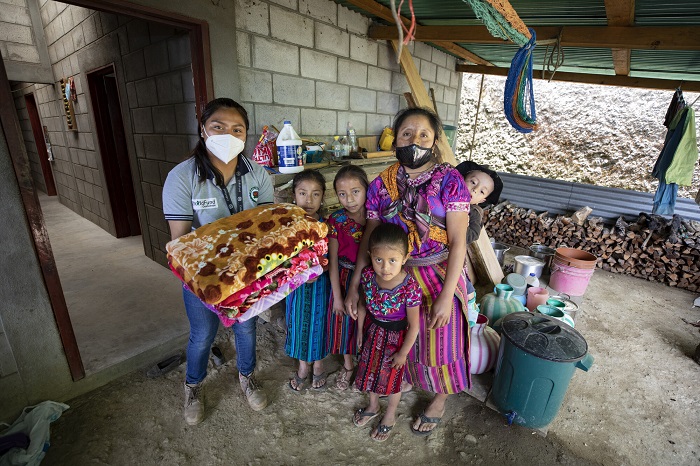
Damaris Lorena Marquin (far left), a field technician with one of ChildFund’s local partner organizations in the highlands of Guatemala, delivers warm blankets to Maria, 31, and her four children in the aftermath of the hurricanes.
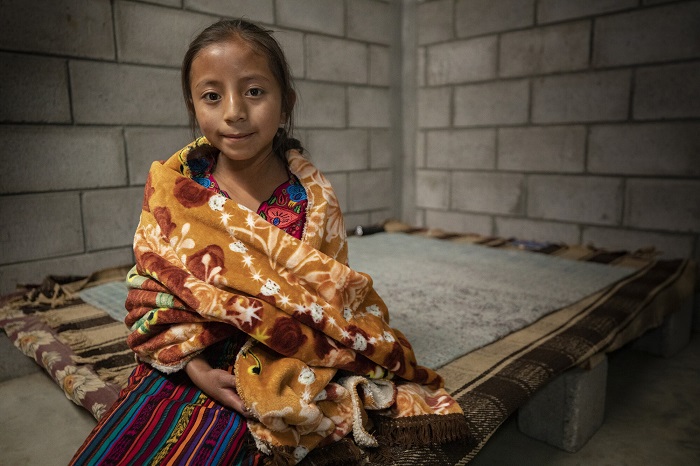
Maria’s daughter, Catarina, 10, snuggles up in her new blanket. After a natural disaster, when aid organizations are focused on delivering essentials like food, it’s easy to forget that many families have also lost the basic household items they depend on for their comfort and well-being. A blanket can make a big difference, especially for a child.
Hurricane recovery in Guatemala for the long haul
Some families were forced to leave home entirely and take refuge in temporary shelters. ChildFund hired psychologists in these shelters to provide counseling to children and families, listening to their stories and helping them build an emotional toolkit to cope with the trauma of their losses. Equipped with art supplies and storybooks, psychologists gave children a safe space to express their feelings and process their experiences.
After all, disaster recovery isn’t just about delivering immediate, tangible emergency relief – it’s about exploring long-term solutions that can mitigate the risks posed by future disasters, whether physical, mental or emotional. We call this disaster risk reduction, and it is enormously important in the communities where ChildFund works.
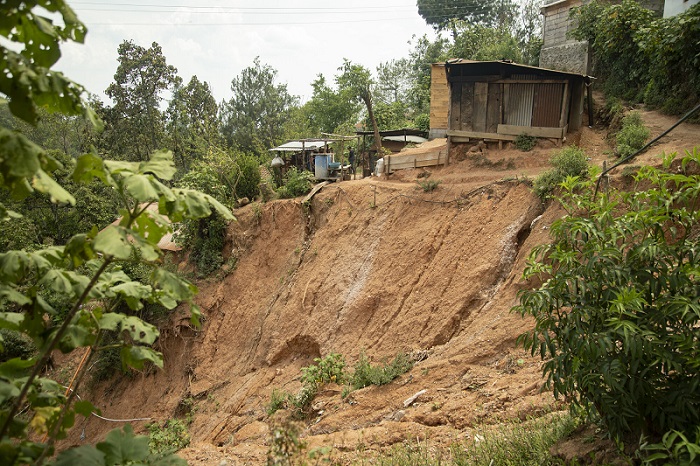

Remnants of mudslides are still visible more than six months after hurricanes Eta and Iota in rural Huehuetenango Department, Guatemala.

Juan’s mother Anna levels the soil in the terraced garden she built with ChildFund’s help.
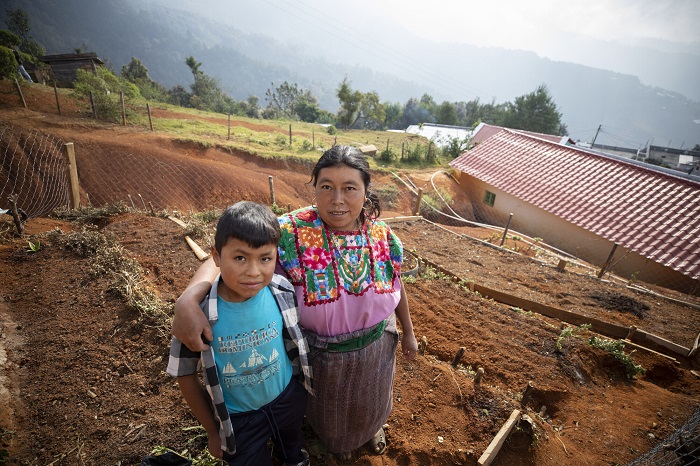
Juan and Anna pause for a photo in the terraced garden. Terraces prevent erosion by shortening a long slope into a series of shorter, more level steps. This allows heavy rains to soak into the soil rather than running off – and it means greater peace of mind for the families that plant them.
The road to recovery has been long and hard, and for many families in Guatemala, the future is still uncertain. “Things opened up for a bit, but right now, we’re having another lockdown emergency,” Reina says. “So we don’t know what will happen.”
But at least she knows that when disasters disrupt her life, her family won’t have to face them alone. “ChildFund helped us a lot,” she says.
Loading...


